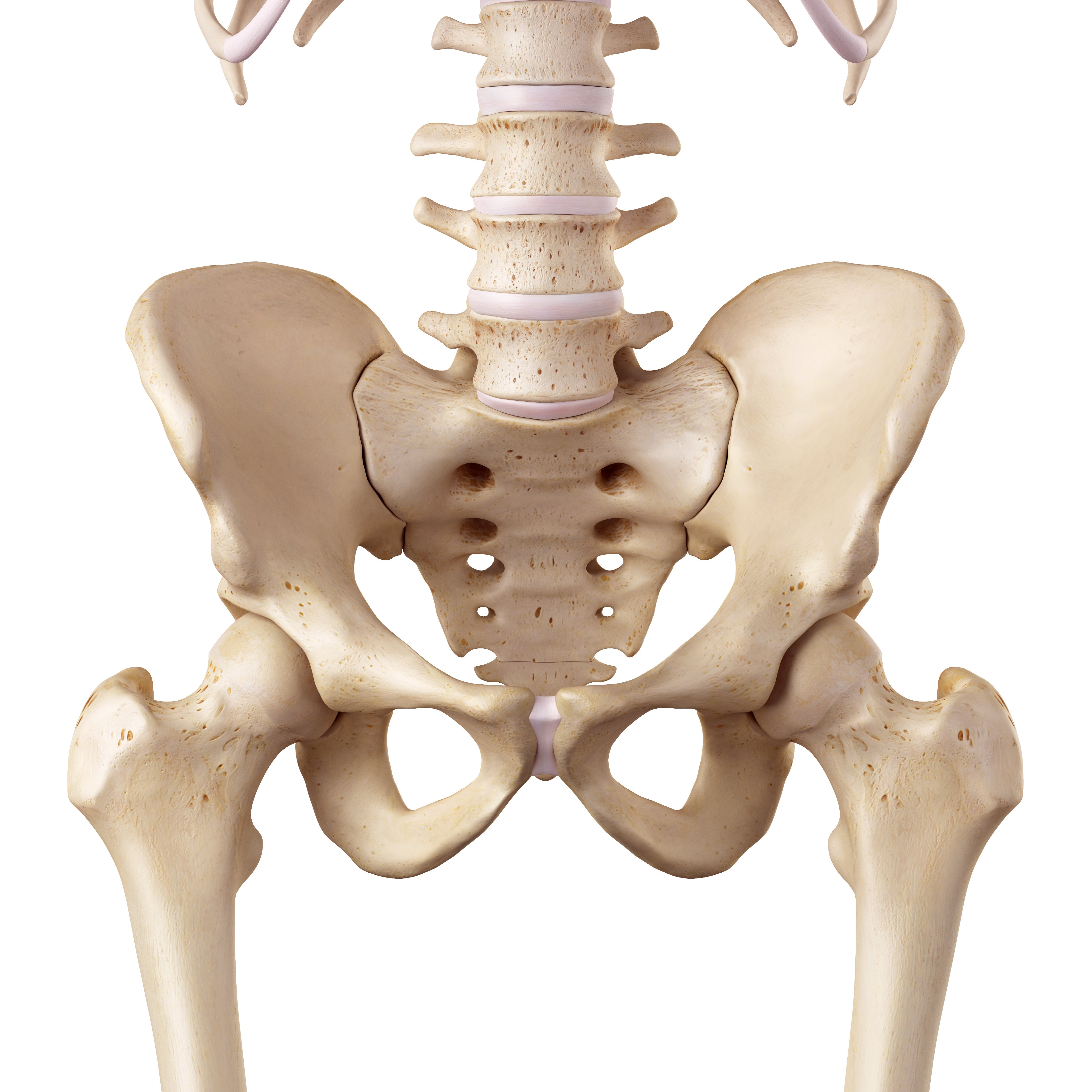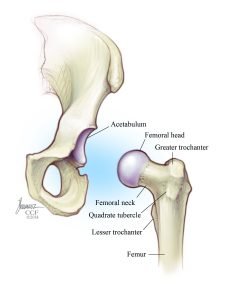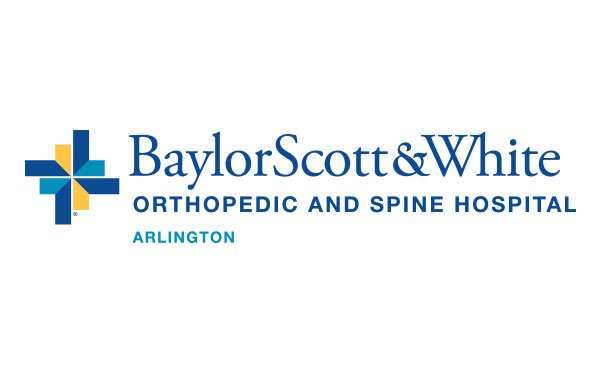Anatomy of the Hip
 One of the two ball and socket joints in the human body, the pelvis and femur form the Hip Joint. The femoral head locks into the acetabulum, forming a joint capable of weight-bearing with adequate range of motion. Due to the weight-bearing nature of the joint, the hip joint often suffers from athrtitis.
One of the two ball and socket joints in the human body, the pelvis and femur form the Hip Joint. The femoral head locks into the acetabulum, forming a joint capable of weight-bearing with adequate range of motion. Due to the weight-bearing nature of the joint, the hip joint often suffers from athrtitis.
The Pelvis
The sacrum and coccyx compose the bony framework for the pelvis, or pelvic girdle. The ilium, ischium, and pubis fuse together to create the hip bone.
The Femur
A long bone and the strongest bone in the body, the proximal end of the femur plays a significant role in the hip joint. The proximal end of the femur features the femoral head, femoral neck, and the greater and lesser trochanters. All parts of the proximal femur play a role in creating and stabilizing the hip joint. The femoral head locks into the acetabulum and suctioned in with a piece of fibrocartilage called the labrum. The hip joint should be considered a saucer rather than a cup, and the labrum deepens this saucer, allowing the femur to securely move. The greater and lesser trochanters allow for muscle and ligament attachment for stabilizing tissues. This joint rarely dislocates.
Ligaments of the hip
Within the hip joint, only one ligament resides; the ligamentum teres, or ligament of head of femur. A triangle shaped ligament, the ligamentum teres supplies blood to the femoral head with help from the obturator artery, and branches from the acetabular fossa to the fovea of the femur.
Outside of the hip joint, three ligaments help stabilize the joint from the outside. The iliofemoral ligament, pubofemoral ligament, and ischiofemoral ligament.
The iliofemoral ligament has a ‘Y’ shape and prevents hyperextension of the hip. Of the three ligaments outside of the hip joint, the iliofemoral ligament boasts the strongest.
Like the ligamentum teres, the pubofemoral ligament has a triangular shape. The pubofemoral helps prevent excessive abduction and extension. Abduction occurs when an individual moves their leg out to the side. Extension occurs when an individual moves their leg back behind them.
Lastly, the ischofemoral ligament prevents hyperextension and has a spiral shape. In addition, the ischiofemoral ligament helps hold the femoral head into the acetabulum.
Key stabilizing muscles of the hip
The hip must support large amounts of weight and pressure in day to day life, especially if individuals participate in sports or athletic activities. Many muscles play a part in hip stabilization. Some key muscles of the hip include:
- The four gluteal muscles: Gluteus Maximus, Gluteus Medius, Gluteus Minimus, Tensor Fasciae Latae
- The nine inner hip muscles: Iliacus, Psoas Major, Psoas Minor, Piriformis, Quadratus Femoris, Obturator Exturnus, Obturator Internus, Superior Gemelli, Inferior Gemelli.
- The many muscles of the thigh
EXPERIENCING hip PAINS? CALL 817-375-5200 TO SCHEDULE AN APPOINTMENT WITH AN AOA ORTHOPEDIC SPECIALIST TODAY!
F.A.Q.
What is the anatomy of the hip joint?
The hip joint is a ball-and-socket joint that connects the thigh bone (femur) to the pelvis. The “ball” is the head of the femur, and the “socket” is the acetabulum, a part of the pelvic bone. This joint is surrounded by a strong capsule and supported by ligaments, tendons, and muscles, including the hip flexors, abductors, and adductors. Understanding the hip’s intricate anatomy is crucial for diagnosing and treating hip-related conditions.
What are common hip conditions related to its anatomy?
Several conditions can affect the hip joint and its surrounding structures. Some common hip issues include osteoarthritis (wear and tear of the joint), hip labral tears (damage to the cartilage rim in the socket), bursitis (inflammation of the bursa sac), and tendinitis (inflammation of tendons). These conditions can cause pain, stiffness, and reduced mobility in the hip, often requiring medical attention and orthopedic care.
How can I maintain good hip joint health?
Maintaining the health of your hip joint is essential for an active lifestyle. To promote hip joint health, consider regular low-impact exercises like swimming or cycling to strengthen the muscles supporting your hip. Maintain a healthy body weight to reduce stress on the joint, and be mindful of your posture and body mechanics to prevent injuries. If you experience persistent hip pain or discomfort, it’s important to consult with an orthopedic specialist for a proper evaluation and personalized guidance on maintaining or restoring hip joint health.


